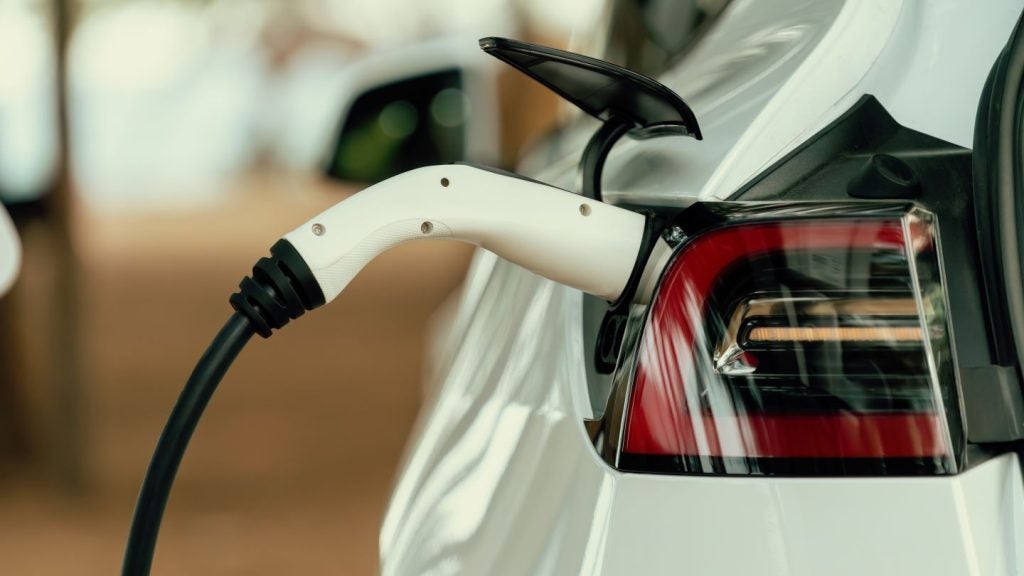
The role of dealerships in the disintermediated motor retail of the future takes centre stage at the 2018 Motor Finance Europe conference, held in Berlin on 26 April. Lorenzo Migliorato reports back with the highlights.
The diversity of participants to the 2018 Motor Finance Europe conference is testament to the variety of influences that are shaping the future of the automotive industry.
European OEMs are at the forefront of technological innovation, captive finance houses spearhead the revolution in usage and access to cars, and fintechs on both sides of the Atlantic seek to extract value by facilitating interactions between different sides.
“The auto industry has never been boring – but it has never been more interesting,” says Georg Bauer, president of Fair and member of Netsol’s technology advisory board.
CHANGING ATTITUDES
Attitudes to consumption and usage are fundamentally changing, as is the “social contract” underlying the provision of services in exchange of data. Carmakers’ finance units are uniquely positioned not only to shape the transformation of one of the core assets of the contemporary age, but also to act as “data-keepers” in the emerging car-as-a-service environment, says Peter Renkel, managing director of the German Captive Finance Association (BDA).
Captives “have to sit across all different [retail] models simultaneously,” says Brendan Gleeson, group chief executive of the White Clarke Group. For instance, as the battle for the customer shifts from offering the lowest price point to offering convenience, captives have ramped up their all-inclusive contract offering. Data from the BDA shows that volumes for inclusive packages surged 17% between 2016 and 2017 alone, to almost 3m contracts.
Additionally, in a fiercely competitive consumer landscape, where industry outsiders can build up a presence in any market almost overnight, captive finance units also represent a safe harbour for customer loyalty.
How well do you really know your competitors?
Access the most comprehensive Company Profiles on the market, powered by GlobalData. Save hours of research. Gain competitive edge.

Thank you!
Your download email will arrive shortly
Not ready to buy yet? Download a free sample
We are confident about the unique quality of our Company Profiles. However, we want you to make the most beneficial decision for your business, so we offer a free sample that you can download by submitting the below form
By GlobalDataAccording to the BDA, 67% of German captive finance customers retain loyalty to the brand, against only a third of bank borrowers and cash buyers.
Last but not least, as the role of online research and ‘soft’ credit searches takes a bigger part of the car-buying journey, captives find themselves at a crossway of data, allowing them to understand their customer like it has never been possible before. They also have the opportunity to employ their product development strength to make the online journey as smooth as possible.
UNSEATING OF ROLES
Opportunities beget change, and change often means the unseating of roles on which the car retail chain was built. As White Clarke director Jeff Shapiro puts it: “Organisations are not going to stay still.” And this may, at times, result in redundancies.
Arguably, nobody is more worried by the digitisation and disintermediation processes shaping motor retail than dealers. In a future where car buyers can use their computer or mobile to browse vehicles, compare finance options and apply for credit, will there still be a need to visit a dealership? As it turns out, most of those in the conference room believe so. Captives realise that the drive for digitisation has to be balanced with responsibility to long-standing collaborations with dealers, says Renkel.
But there are also more practical considerations: business volumes for finance currently go overwhelmingly through dealerships rather than the direct channel, says Gleeson, so it makes sense to keep them in a captive’s network.
“And even if customers do a lot more research beforehand than they used to, the latter phase of the purchase, like going for a test drive, “is not a bad place to be” for dealers,” Gleeson adds.
That does not mean the current ways of doing things will persist. A recurring theme throughout the conference is that, though players may not disappear, their roles and the rules of the game will change. In other words, dealers should prepare to ride the wave of change that will sweep motor retail.
“The collaboration between captive, OEM and dealer will change over time,” says Ulrich Bergmann, partner for financial services at KPMG. “Today the captive can lean back and get business through the dealer’s side. This will change.”
The key is to keep dealers engaged in the digitisation process, and collaborate with them in developing new solutions. “The dealer is not currently part of the [digitisation] game,” notes Bergmann.
“On the other hand, there are very strong partnerships, and I think nowadays it is very important to get a good interaction with the dealer, to try and get [all players] to find a new way of co-operation.”
In the case of co-operation with dealers, it starts with individuation so-called “pain points” and selecting the elements that can add value to the dealers’ interactions with customers. It should not be that captives take an “everything and anything” approach, says Shapiro, trying to implement all elements at once.
For instance, dealers should not be given a myriad different means to transmit applications to the funder – through a portal, by email or on the phone. Instead, Shapiro suggests a single point of contact that allows information to be updated in real time, in a two-way communication model. Some elements of the financing process may also be made available for “self-serving” on part of the dealer.
Customers are increasingly making their research, and potentially settling on a few possible vehicles, in front of a screen. There is a risk for dealerships to become merely the place where the car is handed over if there isn’t a rethink of their role. To that end, James Tew, chief executive officer of iVendi, suggests killing off the phrase “point of sale” and replacing it with “point of fulfilment” – the moment the customers’ expectations turn concrete.
HUMAN TOUCH
Another factor that dealers can capitalise on is the human touch, and the ability to propose alternatives to what the consumer initially had in mind.
“Interaction is what the consumer wants,” says Tew. Consumers are not yet as comfortable with a completely online finance application as they are when face-to-face with another human.
Tew says online buyers are 11 times more likely to only do a “soft credit check” – i.e. a simulation that does not affect the applicant’s credit score – rather than outright submit apply.
And online applications could soon be in the crosshair of the Financial Conduct Authority (FCA) and other national regulators, says Tew, who might want to ensure they provide accurate quotes, rather than just being used as a way to get customer data. Online and point-of-retail financing do not have to be alternatives at odds.
Tew notes how in the UK, lenders are always expected to reroute the customers’ enquiry to the dealer’s website, fully integrating all traditional players in the new-generation customer journey.
In Germany, instead, online applications go straight to the funder’s website, cutting dealerships out of the equation – a dangerous move. “The marketplaces in Germany … want to weaken the dealer’s website,” Tew says. But making treasure of dealers’ online presence is also a safeguard against future competition, he adds.
“Not one of you in this room can compete against Amazon [alone]. You’ll all lose. The way to win is to start and focus on the dealer website, start to help that dealer grow its digital strategy through its website. If you don’t do that, there will be people in the conference that will not be here in the next five years.”
The process of adapting to digitisation is a two-way road. If captives need to provide dealers with the right tools, dealers also need to prepare to grab new opportunities – potentially, by accepting their role will entail different expectations.
“You are a 24-hours-a-day business now,” says Tew. “You are not the seven-till-nine business. Most of your systems will probably go to sleep at nine o’clock.” Dealers should also rethink their approach to customer retention, in line with the new model of loyalty that has been pioneered by captives.
“We try and create a culture of renewal and retention within the dealership,” says Steve Fitzgerald of Chrysalis Loyalty, where he is global sales director. “If we are in contact with customers we can afford influencing their choices in one way or another. We are going to monitor their agreement, we are going to look at it for them, and tell them when we think the best time for change is, financially.”
In other words, the best practice for the dealer is not to “beat the customer database”, spurred by a need for volume origination, but to contact the customer at the optimum timing for a car change. “It’s all about the relationship: keeping in contact with [customers] and giving them an option. When I was with Mercedes-Benz [Financial Services], it was between £1,000 and £2,000 to get a new customer. To retain a customer is what it costs you to pick up the phone.”
CONSUMER PROTECTION
Since the 2008 crash, the UK has been leading the way in Europe for consumer protection, particularly in financial services. Considering the maturity of its motor finance market, it also has the chance to lead in certifying quality all the way through the value chain.
That is the intention BMW’s Alphera, which has been proposing the creation of an accreditation scheme for dealers, developed from within the industry. Or, as Alphera’s marketing manager puts it: “The development of performance through education and training.”
“It is the responsibility of dealers and lenders to make sure that the people who engage with customers in selling regulated products have the necessary skills,” says Alphera director Spencer Halil. “And it is also our responsibility to make sure that situation is monitored and maintained.
“If we do get our act together, and introduce our own [accreditation scheme], that sends a really strong message to our regulator, and instils a great sense of confidence.”
Kouris cites research commissioned by Alphera, which found that customers
generally have a low understanding of dealers’ obligations: only 36% of those surveyed were aware of a dealer’s obligation to present all financial products available to a customer, and 23% did not know that an F&I purchase would have an effect on their credit rating.
“That really tells us that the customer relies on us and dealers to make sure that we look after their interest and we act in their interest,” says Kouris. Such a qualification cannot be a tick-box exercise carried out every six or seven years, says Halil. “What it [needs] to be is an ongoing platform of training, assessment and accreditation that is challenging, robust and really rigorous,” he says.
He wants the process to be one that develops the right skills, recognises and accredits them when they are already there – for instance, when someone has decades of experience in the industry – and eventually accredited managers to develop skills within their own teams.
“This is a measurable set of skills,” says Halil. “It can and should be treated as technically and measurably as a conducting an MOT test.” “If we get this right, it will be a really strong example of self-regulation, in an industry where our regulator is looking for strong examples,” he adds. “Your sales team will be more confident, and if they are more confident they will sell more finance products, and they will improve the performance of their dealership.”
There is no question that the motor retail landscape is changing. But that does not mean there needs be victims. “Dealers will stay, and they have to stay,” says Anu Sachdeva, senior vice-president at Genpact USA. “It’s just that their role will be far different.” It is up to the captives to supply partners with the right opportunities, and it is up to dealers to grasp them.







